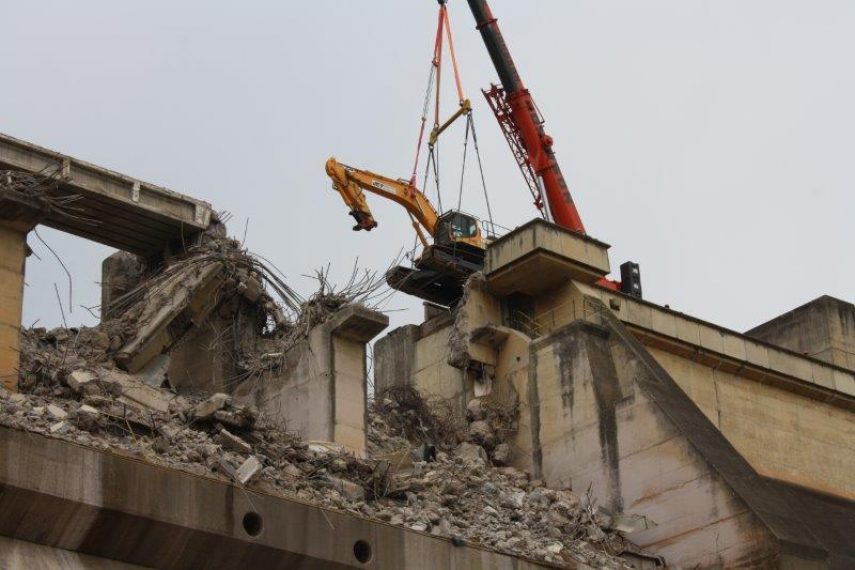JET Demolition’s work on large water-retaining dams constitute some of the most important projects that the specialist contractor has undertaken to date, calling for highly-controlled, cautious, partial demolition techniques.
That’s according to Director Joe Brinkmann, who said new blasting techniques had been developed specifically to retain the structural stability of the dams themselves, with no wasted effort. “We look forward to other challenging work of this nature,” he added.
Rehabilitation of dam walls usually requires demolition of redundant portions of monolithic blocks and associated concrete structures. Dynamic energy imparted by the demolition process has the potential to cause damage to concrete located just across the demolition boundaries and beyond. Contracts Manager Kate Bester said that while it was essential to avoid damage to remaining concrete, it was also important to carry out the demolition works in a productive and cost-effective manner.
“Our work at Hazelmere Dam allowed for the compilation of specific demolition-control guidelines to be developed for dam rehabilitation projects,” she said. Here a combination of explosive, mechanical, and diamond-cutting methods were employed.
“In particular, it was demonstrated that explosives can be used as the primary method of demolition on dam rehabilitation projects in a safe, productive, and controlled manner, without causing damage to the remaining mass concrete and concrete structures.”
Located on the Mdloti River in KwaZulu-Natal, the Hazelmere Dam was built in the 1970s. It was designed originally to accept radial arm gates to raise the Full Supply Level (FSL). However, a subsequent redesign showed that the FSL would be achieved optimally via a Piano Key Weir (PKW).
To clear the way for new construction works, demolition of the existing spillway crest, piers, lintel beam, and bridge decks required the controlled removal of 5 300 m3 of concrete up to 3 m in thickness. “The key requirements were to demolish the redundant structures in a safe, rapid, cost-effective, and controlled manner, without residual damage,” Bester said.

